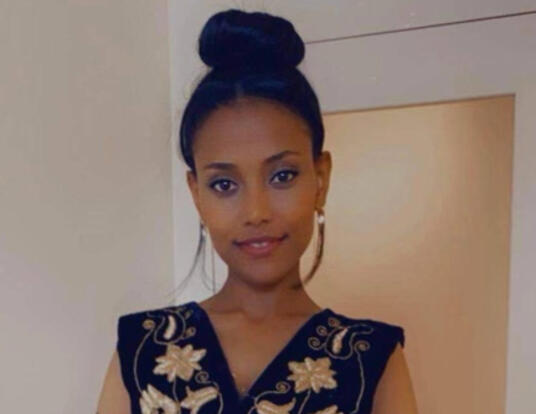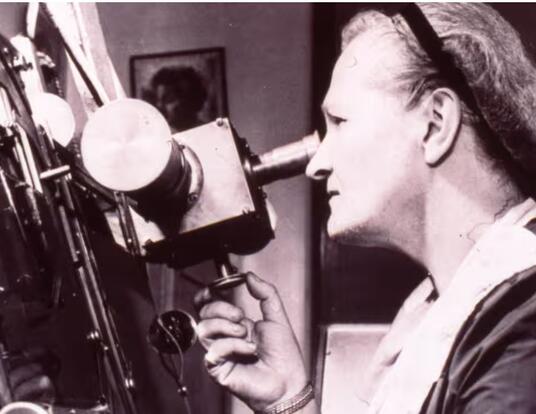Visionary
Ruth Hubbard changed our understanding of how we see—and how we see science
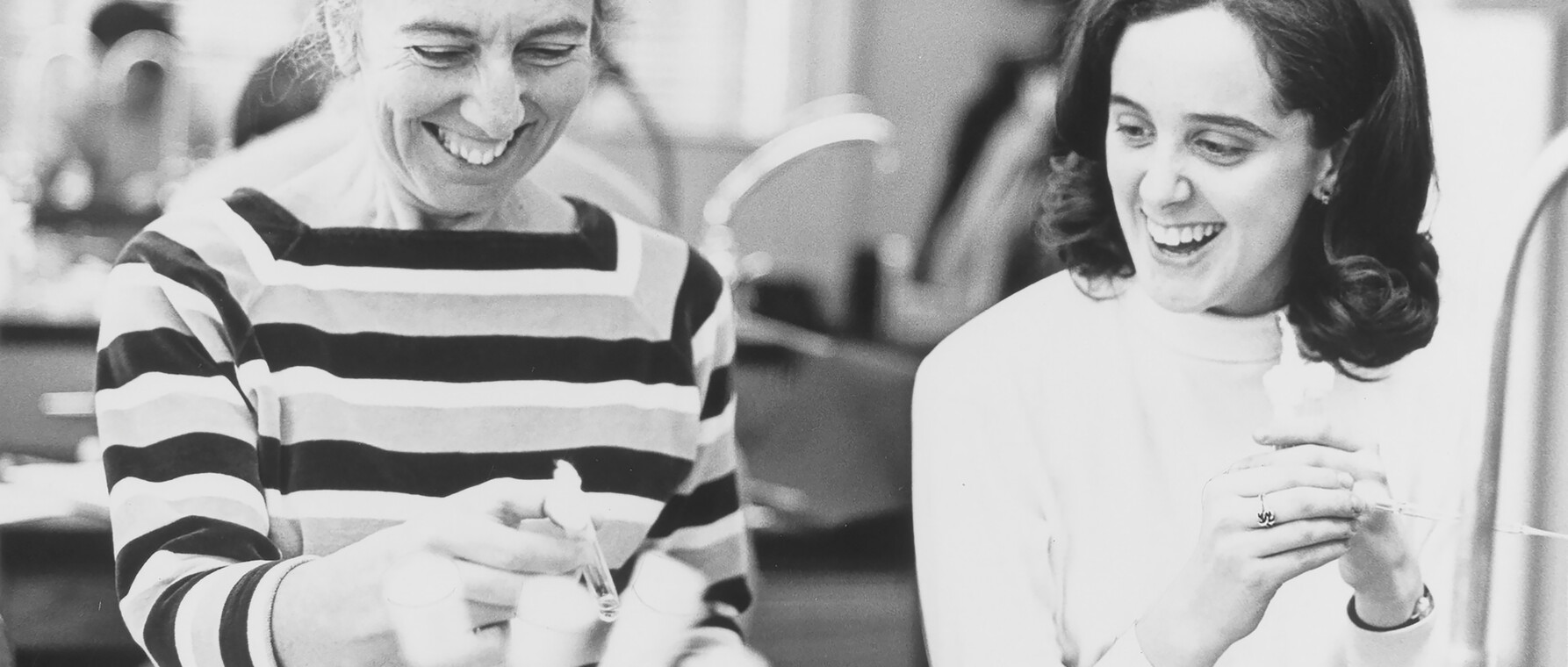
In 1974, Ruth Hubbard was at the pinnacle of a brilliant career as a biochemist. Her research on the way that the eye’s visual pigment interacts with light earned her a share of the prestigious Paul Karrer Gold Medal, awarded by the University of Zurich to outstanding researchers in the field of chemistry. It—and her many other contributions to science—also made her the first female tenured professor in the history of Harvard’s Department of Biology. But, at a time when she might have basked in her achievements and buried herself in the lab, she decided instead to level a blistering feminist critique at the field in which she had labored for most of her life.
“I began to see that science and technology are disciplines invented by men to dominate nature, defined as female,” she remembered in 1987. “I also began to notice the male-biased ways scientists describe female animals and women.… The structure of the profession and its intellectual content do not reflect necessities imposed by nature, but the historical fact that scientists have been men, and economically and socially privileged men at that.”
As a pathbreaking scientist, Hubbard, PhD ’50, changed the way scientists understood how humans see. As a social critic and ethicist, she changed the way scholars saw how science was done. And as a teacher and mentor, Hubbard gave a generation of feminist leaders, both inside and outside of the sciences, a new perspective on their bodies, themselves, and the world in which they lived.
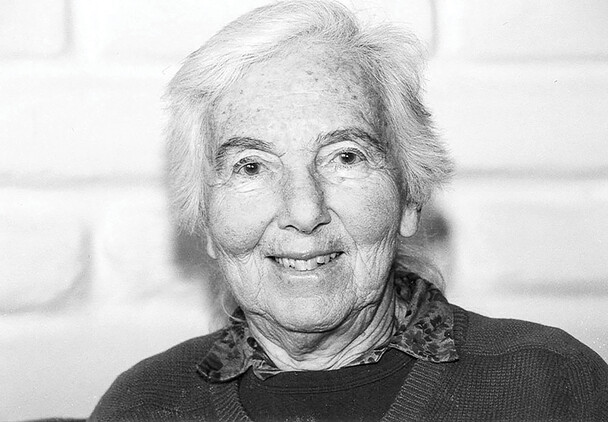
A Superb Scientist
Hubbard, who earned her PhD from Radcliffe, studied phototransduction—the process by which photons of light are converted into electrical signals that can be understood by the rest of the nervous system. Specifically, she focused on rhodopsin, a light-sensitive molecule commonly referred to as a visual pigment, found in photoreceptors.
“Phototransduction begins when photons hit the retina, a piece of neural tissue that lines the back of the eye,” explains Gordon and Llura Gund Research Professor of Neurosciences John Dowling, a student, colleague, and collaborator of Hubbard’s. “Within this tissue, farthest from the front of the eye, are millions of elongated photoreceptor cells. The outer segment of these cells consists of many layers of membranes embedded with thousands of light-sensitive molecules— visual pigment.”
You know, the lion [is] king of the beasts, until you find out it's the lioness that does all the doing.
-Ruth Hubbard
Hubbard’s husband, George Wald, won a share of the Nobel Prize in Physiology or Medicine in 1967 for discovering that visual pigment is made up of the protein opsin coupled to a slightly modified form of vitamin A called retinal. When this complex interacts with light, Wald showed, the retinal splits off from opsin, resulting in the activation of retinal cells that send electrical signals to the brain. But the details of this process were not completely understood.
In their landmark 1958 paper, “The Action of Light on Rhodopsin,” Hubbard and colleague Allen Kropf reported that a specific shape of retinal—11-cis retinal—is bound to opsin. When a photon of light is captured, the retinal changes shape, enabling the opsin protein to change its shape as well, setting off a cascade of electrochemical reactions in the retina that initiate seeing.
“Ruth and Allen Kropf showed that all light does in the visual process is to change the shape of retinal,” Dowling says. “But she contributed much more to science than that. For instance, she also showed how vitamin A is converted to retinal. I eventually wrote several papers with her. She was a superb scientist.”
As chair of Harvard’s Department of Biology in 1974, Dowling pushed to make his colleague the department’s first female tenured professor. By that time, however, Hubbard’s consciousness had been reshaped by the role of science in the Vietnam War and by the burgeoning feminist movement. In 1976, she stopped working in the laboratory, much to the disappointment of colleagues like Dowling, to focus on the way that social structures shaped science—especially the questions that its mostly male practitioners asked.
Deconstructing Darwin
Hubbard began by asking her own questions of one of the foundational works of modern life science: Charles Darwin’s On the Origins of Species. As she did, she saw in Darwin’s portrayal of the animal world as a “kingdom” marked by cutthroat competition for scarce resources, not objective science but a reflection of the society in which the English naturalist lived. Looked at from a different perspective, Hubbard thought, one could just as easily see the centrality of cooperation in species survival and flourishing, as the Russian zoologist, geologist, and revolutionary Peter Kropotkin had in his 1902 book, Mutual Aid. Increasingly, she saw supposedly objective scientists “reading their social arrangements” into nature.
“If you look at animal models, you can find animal examples of all kinds of behavior,” she said in 2007. “Where the females are bigger and the males are smaller, where the females are more competitive and the males are less competitive.… You know, the lion [is] king of the beasts until you find out it’s the lioness that does all the doing.”

A member of a Jewish family that escaped Austria after the Anschluss with Nazi Germany, Hubbard railed against anything she saw as biological essentialism—especially the notion that genes determined human traits and behavior and therefore justified social hierarchies. “The idea was that there were people who—whether in slaveholding republics or the kind of democracy that existed in the United States at the time she was teaching—would try to justify their superiority based on biology,” says Nancy Krieger, professor of social epidemiology at the Harvard T.H. Chan School of Public Health and a student, colleague, and longtime friend of Hubbard. “Those elites tended to restrict the study of science to support their essentialist interpretations. That’s what she was critiquing.”
Not surprisingly, Hubbard’s rejection of determinism fueled a deep skepticism of genetic research and testing. She strongly opposed recombinant DNA, for instance, which involves combining the genetic material of one organism with that of another. “[I found recombinant DNA research] offensive in the way it was being pursued, not offensive in and of itself,” she said. “Acting as though we could foretell how changing or exchanging genes that had in nature never been exchanged before … doing it now in colonies, in laboratories on a large scale ... [believing] that one could predict what the outcome would be, whether it would be beneficial or not.”
In the proliferation of genetic testing and screening for pregnant women, Hubbard saw a profit-driven attempt by the medical establishment to maintain control of the birthing experience while promoting a new eugenics.
“In the course of the ’60s and ’70s … there was a real effort … to try to get the doctors out of the birthing room [in favor of midwives and other health professionals],” she said in 2007. “You then began to get the development of all kinds of technologies and theories trying to predict…the health of embryos and fetuses before they were born. So, at that point you got…the takeover [of the birthing process by the medical establishment] again and also you got this eugenic pressure; that is that, if you aren’t careful, the species is going to deteriorate because you’re going to have all these babies that could be avoided and prevented.”
While Hubbard was certainly a feminist, the complexity and breadth of her social analysis stood in opposition to simplistic male-female binaries and took into account race and class as well as gender. (“Women and nonwhite, working-class and poor men have largely been outside the process of science-making,” she told The New York Times in 1981.) According to Krieger, her former mentor’s critique of science was rooted in history and a deep understanding of material conditions, racism, and settler colonialism.
“She was clear that she was speaking of elite European men predominantly, who were wealthy and had the means and legal permissions to do the kinds of science that they did,” Krieger says. “She was also very clear that there were very privileged and elite women who were, for instance, completely complicit in systems of racism in the United States.”
Krieger says that Hubbard always understood humans as biological organisms. In fact, it was that understanding that enabled her to be so aware of the influence on science of forces outside the laboratory. “Ruth was very clear that humans are biological beings, not just ideas falling out of thin air,” Krieger says. “But the human imagination is pretty powerful. It can interpret the world in which we find ourselves living and shape it. She was clear on that as well.”
Women's Center
Although critique was important to Hubbard, so was having a direct impact on her community. By the time she was granted tenure, her son Elijah Wald remembers, Hubbard had “spent a year or two volunteering at a school in Roxbury, an inner-city neighborhood in Boston. She also did pregnancy counseling.” Hubbard befriended members of the Boston Women’s Health Book Collective as well, collaborating with the group in the early 1980s on a revision of their groundbreaking feminist book Our Bodies, Ourselves. “She was always looking for ways to engage,” Wald says.
That passion for engagement made its way back to campus in the form of a groundbreaking new course that would change how scores of young women at Harvard understood their own biology and the way that social constructs of gender shaped supposedly objective science. First offered in 1975 as a Radcliffe College seminar, Biology and Women’s Issues grew to around 80 participants only four years later. The course attracted a very lively mix of students—some in the life sciences, others in the humanities and social sciences, but all learning to think about biology in a new way.
“Ruth’s class was fundamentally about bringing incisive ideas to critique the science that people had learned—what science said about our bodies and other people’s bodies, what these bodies did, and what different bodies do with each other,” says Krieger, who participated in the seminar both as a student and a teaching fellow. “Then, it was about coming up with a much clearer way of having a critical agenda for doing better critique and better science.”
As an example, Hubbard would discuss the human skeleton, pointing out that bone mass is largely a function of activity rather than gender. “If only some people get to take up sports, or are trained to do some kinds of work, it’s going to show up in the bones,” Krieger says. “It’s not because it was biologically determined. It’s what happens when you have certain people doing certain kinds of physical engagement and others not.”
Evelynn Hammonds, PhD ’98, Harvard’s Barbara Gutmann Rosenkrantz Professor of the History of Science and of African and African American Studies, was also a teaching fellow for Biology and Women’s Issues. She says the class was well-loved in part because of its focus on the embodied experience of women—and the attention Hubbard paid to her students. As part of their classwork, for instance, the mostly female participants were asked to keep a journal and write reactions to the topics covered each week. They were remarkably candid—sometimes painfully so. Hubbard responded with care and concern.
“Some of the young women would write about alcohol use, for instance,” Hammonds says. “Ruth addressed drinking and women’s biology in class, but she also asked us to get in touch with Health Services or the resident dean to let them know that we had identified a student that might need help. It was the first time I ever worked with a professor who reached out in such a caring way.”
Hubbard’s class—along with the new Radcliffe Women’s Center and Seventh Sister student newspaper—was at the center of the burgeoning feminist movement at Harvard in the 1970s and 1980s. Elijah Wald says that Biology and Women’s Issues was formative for many Harvard undergraduates who went on to become prominent feminist thinkers and leaders.
“The course was not simply a matter of Ruth’s ideas and influence; it was a place where young women met and heard each other,” he says. “The people who went through her women’s biology class at Harvard included the journalists Amy Goodman and Susan Faludi. Paula Johnson, the president of Wellesley College, … the former prime minister of Pakistan, Benazir Bhutto, went through that class. If you were a feminist at Harvard, that was an important part of your community."
No one has been more tireless and influential critic of the biological theory of women's inequality than Ruth Hubbard.
-Harvard Geneticist Richard Lewontin
A Beacon
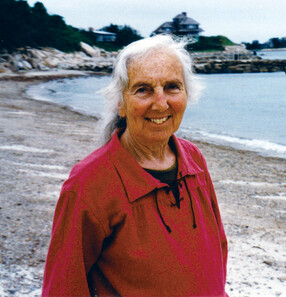
Even as they endeared her to a new generation of students and scholars, Hubbard’s positions on genetic research and testing alienated her from some in the scientific community. But not everyone. When she retired in 1990, Harvard evolutionary biologist Stephen Jay Gould spoke of Hubbard as “a beacon and a support for radical and feminist perspectives—a focus and a gadfly for a view of life that needs constant defending and nurturing.” In a 1994 overview of Hubbard’s career as a writer and thinker, the Harvard geneticist Richard Lewontin wrote, “No one has been a more tireless and influential critic of the biological theory of women’s inequality than Ruth Hubbard.”
Hubbard died in 2016 at the age of 92. In addition to Exploding the Gene Myth, co-authored with Wald, her hugely influential writings included the 1979 essay, “Have Only Men Evolved?” published in her co-edited volume Women Look at Biology Looking at Women, and The Politics of Women’s Biology, as well as scores of scientific papers.
Elijah Wald says that his mother would want to be remembered for those she taught, mentored, and counseled. Krieger, one of the many whose career and mind were shaped by their relationship with Hubbard, recalls her old friend’s curiosity, the incisiveness of her thought, and her commitment to social change and better science. Perhaps most of all, though, she remembers Hubbard for the questions she taught Krieger to ask.
“Why are there even sexes?” she says. “What’s the point of sexual reproduction? What are ways of framing that? Ruth asked basic questions. She believed that there was always the possibility to learn, to change ideas, and to become exposed to new information. Yes, life experience, the law, and privilege absolutely affect how people think, but she had an expansive critique that didn’t simplify or rigidify. She always knew that the world was more wondrous and amazing than that.”
Photos by Elijah Wald, Starr Ockenga/Schlesinger Library Radcliffe Institute Harvard University, Courtesy Nancy Krieger
Get the Latest Updates
Join Our Newsletter
Subscribe to Colloquy Podcast
Simplecast



